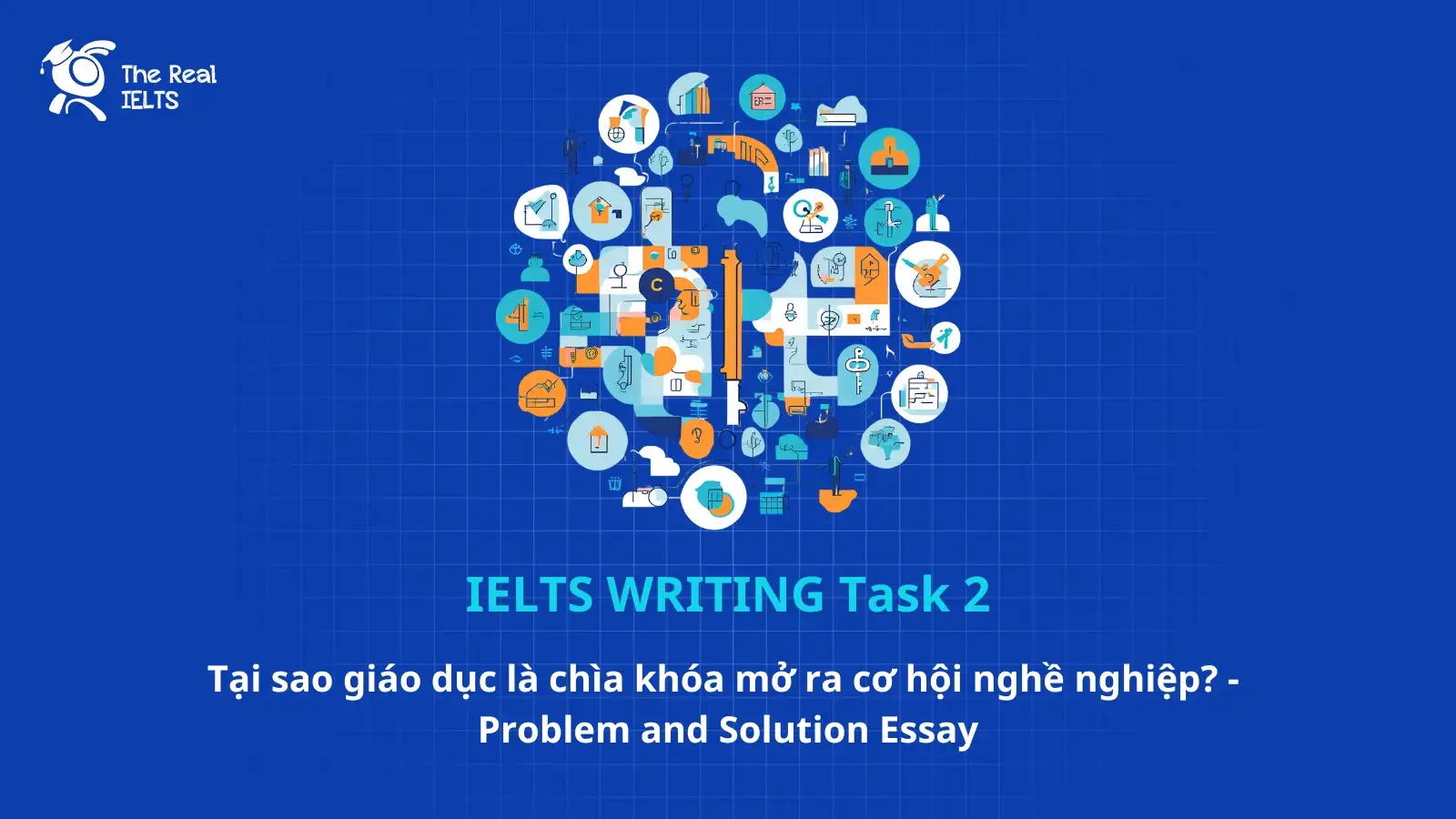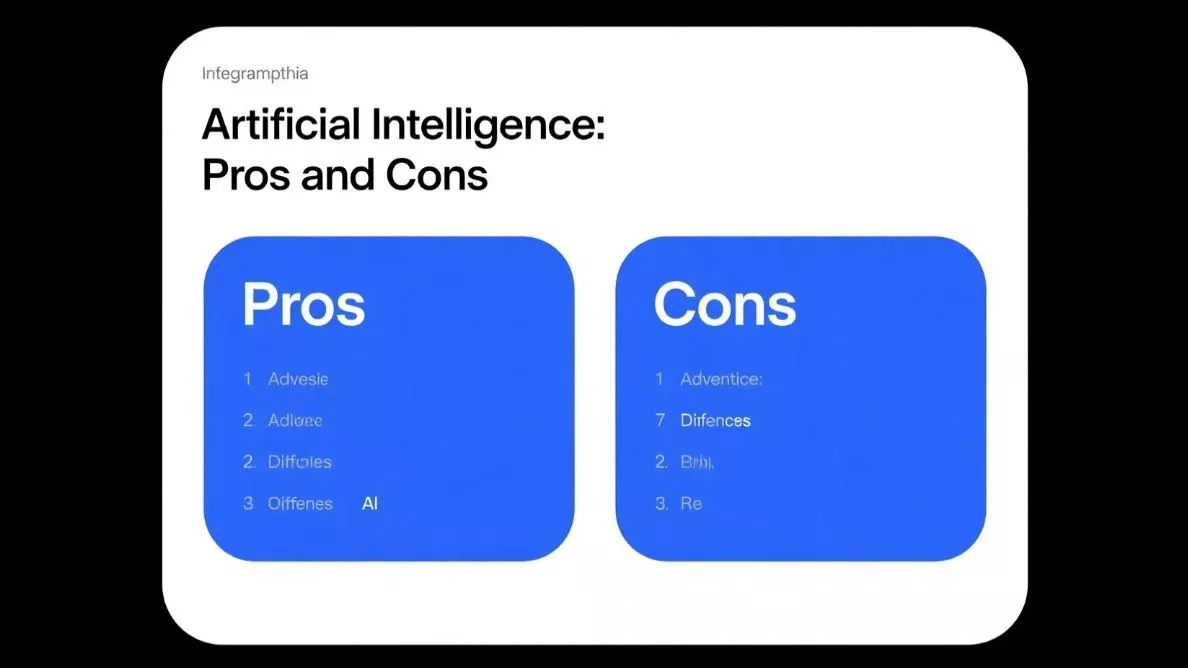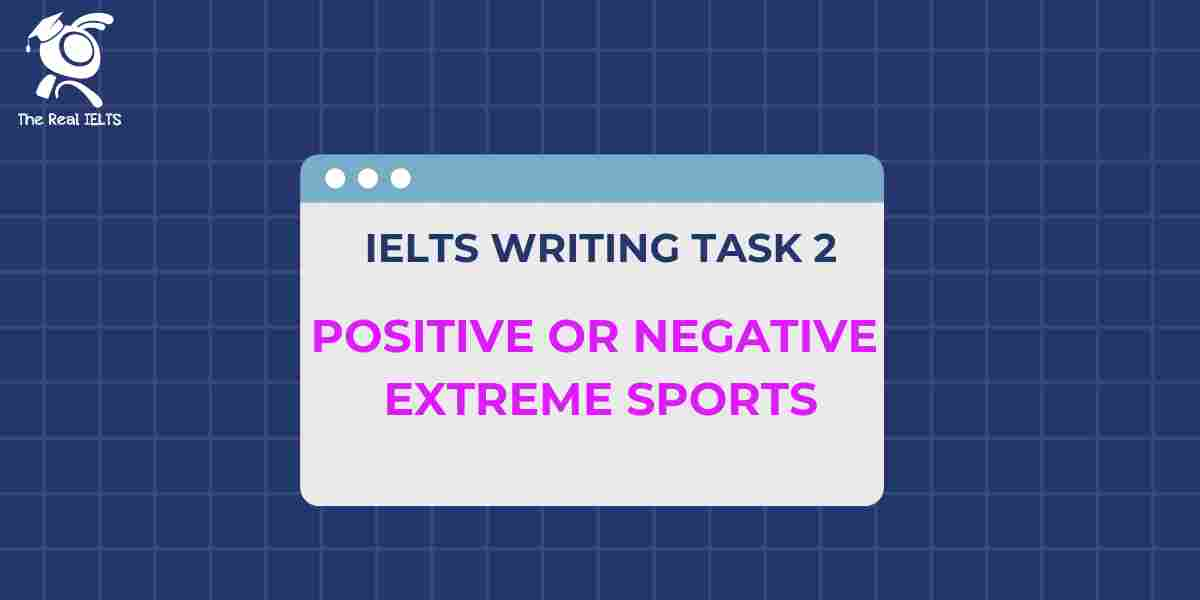Trong IELTS Writing Task 2, dạng Problem and Solution Essay yêu cầu thí sinh xác định vấn đề và đề xuất giải pháp. Thiếu giáo dục có thể cản trở cơ hội nghề nghiệp, dẫn đến thu nhập thấp và thất nghiệp. Vậy làm thế nào để nâng cao chất lượng giáo dục và cải thiện tình trạng này?
Đề bài IELTS Writing Task 2: Tại sao giáo dục là chìa khóa mở ra cơ hội nghề nghiệp? – Problem and Solution Essay
Although education is considered essential for career success, many individuals still struggle to find jobs. What are the reasons for this issue, and what solutions can be implemented?
Câu trả lời 1
Essay Structure:
- Introduction
- Paraphrase the statement
- Introduce the idea that despite education being crucial, many graduates face unemployment
- Briefly mention that this essay will explore the reasons and possible solutions
- Body Paragraph 1: Reasons for Unemployment Despite Education
- Skills Gap: Many graduates lack practical skills required by employers
- Job Market Saturation: Too many qualified candidates for limited positions
- Mismatch Between Education and Industry Needs: Some degrees do not align with job market demands
- Economic Conditions: Recession, automation, and outsourcing reduce job opportunities
- Body Paragraph 2: Solutions to Address the Issue
- Improve Practical Training: Incorporate internships, vocational training, and hands-on learning in education
- Align Education with Market Needs: Universities should adapt curricula to match industry demands
- Encourage Entrepreneurship: Support self-employment through funding and mentorship programs
- Government and Industry Collaboration: Job creation initiatives and policies to boost employment
- Conclusion
- Summarize key points
- Emphasize the need for a multi-faceted approach to bridge the gap between education and employment
Sample Essay:
Introduction
Although education is widely regarded as a crucial factor for career success, many graduates still struggle to secure employment. This issue arises due to a variety of factors, including a mismatch between education and job market demands. However, several solutions can be implemented to address this problem effectively.
Body Paragraph 1: Reasons for Unemployment Despite Education
One of the main reasons for graduate unemployment is the skills gap between what students learn in school and what employers require. Many graduates possess theoretical knowledge but lack the practical skills needed in real-world work environments. Additionally, job market saturation leads to fierce competition, particularly in fields where too many candidates hold similar qualifications. Another major issue is the misalignment between education and industry needs—some degree programs focus on outdated or less in-demand subjects, making it difficult for graduates to find suitable positions. Furthermore, economic conditions such as recessions, automation, and outsourcing reduce job availability, leaving many educated individuals unemployed.
Body Paragraph 2: Solutions to Address the Issue
To tackle this problem, education systems should integrate more practical training, such as internships, apprenticeships, and hands-on learning, to better prepare students for the workforce. Additionally, universities should align their curricula with industry demands by updating courses to include relevant skills and emerging job trends. Another effective solution is to encourage entrepreneurship, providing graduates with access to funding and mentorship programs to create their own job opportunities. Lastly, governments and businesses should collaborate to implement job creation policies, invest in skill development programs, and support industries that generate employment.
Conclusion
In conclusion, while education is essential for career success, it is not a guaranteed pathway to employment due to skills gaps, market saturation, and economic factors. To address this, education must evolve to include more practical training, align with industry needs, and support entrepreneurial efforts. A combination of these solutions will help bridge the gap between education and employment, ensuring better career opportunities for graduates.
Câu trả lời 2
Essay:
Education is often seen as a key factor in career success, yet many graduates still face difficulties in securing employment. This issue arises due to several factors, including skill mismatches and economic conditions. However, practical solutions can be implemented to address this problem effectively.
One major reason for graduate unemployment is the mismatch between academic knowledge and job market demands. Many university programs focus heavily on theoretical learning while neglecting practical skills that employers seek. As a result, graduates may lack hands-on experience, problem-solving abilities, and adaptability, making them less attractive to potential employers. Additionally, economic factors, such as job market saturation and slow economic growth, contribute to high unemployment rates. In many countries, there are more graduates than available job positions in certain fields, forcing individuals to accept lower-paying or unrelated jobs.
To address this issue, educational institutions should reform curricula to include more practical training, internships, and vocational courses that equip students with real-world skills. Collaborations between universities and industries can ensure that graduates meet market demands. Furthermore, governments can invest in job creation programs, support entrepreneurship, and promote skill development initiatives to help individuals transition smoothly into the workforce. Encouraging lifelong learning and adaptability through online courses and professional training can also improve employability.
In conclusion, while education is crucial for career success, it is not a guaranteed pathway to employment due to skill mismatches and economic challenges. By improving educational programs and fostering stronger ties between academia and industry, alongside government-supported employment initiatives, this issue can be effectively mitigated.
Câu trả lời 3
While education is undoubtedly a crucial factor in career success, the unfortunate reality is that many educated individuals still struggle to find suitable employment. This disconnect stems from a complex interplay of factors, requiring multifaceted solutions.
Reasons for the Issue:
- Skills Gap: A significant reason is the growing gap between the skills acquired through formal education and the skills demanded by employers. Educational institutions may not always keep pace with the rapidly evolving needs of the job market, leaving graduates lacking in-demand practical skills and experience.
- Job Market Saturation: In certain fields, the number of graduates exceeds the available job openings, leading to increased competition and difficulty securing employment. This saturation can be particularly acute in popular or traditionally prestigious fields.
- Lack of Practical Experience: Employers often prioritize candidates with relevant work experience, even for entry-level positions. Many graduates lack the practical experience needed to make them competitive, creating a catch-22 situation.
- Economic Downturns: Recessions and economic downturns can significantly impact job availability across all sectors, making it harder for even highly qualified individuals to find work.
- Geographical Limitations: Job opportunities may be concentrated in specific geographic areas, requiring individuals to relocate, which isn’t always feasible or desirable.
- Ineffective Job Search Strategies: Some graduates struggle to find jobs due to ineffective job search strategies, including inadequate networking, poorly crafted resumes and cover letters, and insufficient interview preparation.
- Bias and Discrimination: Unfortunately, bias and discrimination based on factors like gender, race, ethnicity, or socioeconomic background can still play a role in hiring decisions, hindering certain individuals’ career prospects.
- Overemphasis on Credentials: Some employers may overemphasize formal credentials, overlooking candidates with valuable skills and experience gained through alternative pathways, like vocational training or apprenticeships.
Solutions:
- Curriculum Reform: Educational institutions need to continuously adapt their curricula to align with current and future job market demands. This includes incorporating practical skills training, industry partnerships, and experiential learning opportunities.
- Internships and Apprenticeships: Expanding internship and apprenticeship programs can provide students with valuable practical experience and make them more competitive candidates.
- Skills Development Initiatives: Governments and organizations can invest in skills development initiatives that offer training and retraining opportunities for individuals seeking to acquire in-demand skills.
- Career Counseling and Guidance: Providing comprehensive career counseling and guidance services can help students and graduates make informed career choices, develop effective job search strategies, and connect with potential employers.
- Entrepreneurship Support: Promoting and supporting entrepreneurship can create new job opportunities and empower individuals to create their own career paths.
- Addressing Bias and Discrimination: Implementing policies and practices that promote diversity, equity, and inclusion in hiring processes is essential for creating a fair and equitable job market.
- Promoting Alternative Pathways: Recognizing and valuing skills and experience gained through alternative pathways, such as vocational training and apprenticeships, can broaden the talent pool and create more inclusive hiring practices.
- Stimulating Economic Growth: Government policies that stimulate economic growth and create new job opportunities are crucial for addressing unemployment and underemployment.
By implementing these solutions, we can bridge the gap between education and employment, ensuring that educated individuals have a greater chance of achieving their career aspirations and contributing to a thriving economy.
Câu trả lời 4
Introduction
Education is widely regarded as a key factor in achieving career success. However, despite obtaining academic qualifications, many graduates face difficulties in securing employment. This paradox raises concerns about the effectiveness of education in meeting job market demands. This essay will explore the reasons behind this issue and propose potential solutions to improve job opportunities for educated individuals.
Reasons Why Educated Individuals Struggle to Find Jobs
- Mismatch Between Education and Job Market Demands
Many graduates hold degrees in fields with limited job opportunities, leading to an oversupply of qualified individuals in certain sectors while other industries face labor shortages. For example, there may be an abundance of business administration graduates but a lack of skilled workers in technology and engineering. - Lack of Practical Experience
Universities often focus on theoretical knowledge rather than hands-on experience. As a result, many graduates enter the job market without the necessary skills to meet employers’ expectations. Internships and practical training are often limited, leaving students unprepared for real-world work environments. - Economic Conditions and Job Competition
Economic downturns and recessions reduce the number of available jobs, making it difficult for even highly educated individuals to find employment. Additionally, job competition has intensified due to increasing numbers of graduates each year. - Overqualification and Underemployment
Some graduates accept jobs that do not match their qualifications due to a lack of suitable opportunities. This leads to underemployment, where individuals work in positions that do not fully utilize their skills or education, resulting in job dissatisfaction and wasted potential. - Rapid Technological Changes
In today’s digital era, industries are evolving rapidly, and traditional educational programs may fail to keep up with these changes. Many graduates find that their knowledge becomes outdated, making them less competitive in the job market.
Solutions to Improve Employment for Educated Individuals
- Align Education with Market Needs
Universities should regularly update their curricula to match industry demands. Governments and educational institutions should collaborate with businesses to identify skill gaps and ensure that students are trained in high-demand fields such as data science, artificial intelligence, and healthcare. - Increase Access to Internships and Vocational Training
To bridge the gap between education and employment, institutions should integrate internships, apprenticeships, and vocational training into their programs. This will provide students with practical experience and enhance their employability. - Encourage Entrepreneurship and Skill Development
Governments and organizations should promote entrepreneurship by offering financial support, mentorship programs, and business incubators. Additionally, students should be encouraged to develop soft skills such as communication, teamwork, and problem-solving, which are highly valued by employers. - Promote Lifelong Learning and Upskilling
In a rapidly changing job market, continuous learning is essential. Professionals should be encouraged to pursue online courses, certifications, and workshops to stay updated with industry trends and technological advancements. - Economic Policies to Boost Job Creation
Governments should implement policies that promote job creation, such as supporting small and medium-sized enterprises (SMEs), attracting foreign investment, and fostering innovation in emerging industries.
Conclusion
Although education is a critical factor in career success, many graduates still face unemployment due to skill mismatches, economic challenges, and a lack of practical training. By aligning education with job market needs, promoting vocational training, and encouraging lifelong learning, societies can create more employment opportunities for educated individuals. A comprehensive approach that combines education, experience, and adaptability is key to addressing this issue effectively.
Câu trả lời 5
Introduction
Education is widely regarded as a crucial factor in career success, yet many graduates and job seekers still face difficulties in securing employment. This issue arises due to various factors, including economic conditions, skill gaps, and the rapidly changing job market. This essay will explore the reasons behind this challenge and suggest possible solutions to improve job prospects for educated individuals.
Reasons Why Educated Individuals Struggle to Find Jobs
- Skill Gap Between Education and Industry Needs:
- Many educational institutions focus on theoretical knowledge rather than practical skills.
- Employers seek candidates with hands-on experience, problem-solving abilities, and adaptability, which are often not fully developed in academic settings.
- Job Market Saturation:
- Certain fields, such as business and humanities, have more graduates than available job positions, leading to high competition.
- Oversupply of degree holders reduces job opportunities in some industries.
- Lack of Work Experience:
- Many employers prefer candidates with prior experience, making it difficult for fresh graduates to secure entry-level positions.
- Internships and part-time jobs are not always accessible to all students, limiting their exposure to real-world work environments.
- Technological Advancements and Changing Job Demands:
- Automation and artificial intelligence have reduced the demand for certain traditional jobs.
- Many job roles now require digital skills that some graduates may not possess.
- Economic Conditions and Unstable Job Market:
- Economic downturns and recessions lead to fewer job opportunities, affecting both new graduates and experienced professionals.
- Companies may cut hiring budgets or offer lower salaries due to financial constraints.
Solutions to Improve Job Prospects for Educated Individuals
- Curriculum Reform and Skill Development:
- Educational institutions should update their curricula to include practical skills, internships, and industry-specific training.
- Greater emphasis should be placed on soft skills, such as communication, leadership, and adaptability.
- Promoting Vocational and Technical Training:
- Alternative education paths, such as vocational training, apprenticeships, and certification programs, should be encouraged.
- These options can provide specialized skills that match industry needs and increase employability.
- Encouraging Entrepreneurship and Self-Employment:
- Governments and organizations should offer support programs, funding, and mentorship for young entrepreneurs.
- Encouraging innovative thinking and business development can create new job opportunities.
- Enhancing Career Guidance and Job Market Awareness:
- Schools and universities should provide better career counseling to help students choose fields with strong job prospects.
- More awareness should be raised about emerging industries and in-demand skills.
- Bridging the Experience Gap:
- Companies can offer more internship and trainee programs to help students gain real-world experience before graduating.
- Governments and private sectors should collaborate to create initiatives that provide work opportunities for fresh graduates.
Conclusion
Although education plays a vital role in career success, many factors contribute to unemployment among educated individuals, including skill gaps, market saturation, and technological changes. To address this issue, educational institutions, businesses, and governments must work together to provide better training, industry exposure, and alternative career pathways. By adapting to the evolving job market, individuals can improve their employability and secure fulfilling careers.
Câu trả lời 6
Despite the widely held belief that education is essential for career success, many graduates still face challenges in securing employment. This issue can be attributed to various factors, including skill gaps, economic conditions, and mismatches between education and industry demands. However, several solutions can help address this problem.
Reasons for Unemployment Among Educated Individuals
- Skill Gaps Between Education and Industry Needs
Many educational institutions focus on theoretical knowledge rather than practical skills. As a result, graduates may lack the hands-on experience and job-specific abilities that employers require. - High Competition in the Job Market
In some fields, there are more graduates than available job opportunities. This oversupply leads to intense competition, making it difficult for individuals to secure suitable positions. - Economic Factors and Job Availability
Economic downturns, automation, and shifts in industry demands can reduce job opportunities. In some cases, companies may cut hiring or replace human workers with technology, leaving many graduates unemployed. - Lack of Work Experience
Many employers prefer candidates with prior experience, making it difficult for fresh graduates to find their first job. Internships and entry-level positions are often limited, further increasing employment challenges.
Solutions to Improve Employment Prospects for Educated Individuals
- Enhancing Practical Training in Education
Universities and colleges should integrate more hands-on learning, internships, and industry collaborations into their programs to ensure students graduate with job-ready skills. - Encouraging Vocational and Technical Education
Not all careers require traditional university degrees. Expanding vocational training and skill-based education can help individuals secure jobs in high-demand fields such as technology, healthcare, and skilled trades. - Government and Private Sector Initiatives
Governments and businesses should work together to create more job opportunities through employment programs, incentives for companies to hire fresh graduates, and support for entrepreneurship. - Developing Soft Skills and Networking
In addition to academic qualifications, individuals should focus on improving communication, problem-solving, and networking skills. Building professional relationships and gaining real-world experience through internships or volunteering can increase job prospects.
Conclusion
While education is crucial for career success, it is not always sufficient on its own. A combination of practical training, industry-specific skills, and adaptability is essential to bridge the gap between education and employment. By reforming education systems and encouraging skill development, individuals can enhance their employability and secure meaningful job opportunities.
Câu trả lời 7
Education is often regarded as a crucial factor in securing a successful career, yet many graduates still face challenges in finding suitable employment. This issue arises due to several factors, including the mismatch between education and job market demands, economic conditions, and lack of practical experience. However, certain measures can be taken to address this problem effectively.
One of the main reasons for graduate unemployment is the gap between academic education and industry requirements. Many university programs focus heavily on theoretical knowledge rather than practical skills, leaving graduates unprepared for real-world work environments. Additionally, rapid technological advancements have led to changing job market demands, making some degrees less relevant. Economic factors, such as recessions and market saturation in certain fields, further exacerbate the issue by limiting job opportunities. Furthermore, many employers prefer candidates with prior work experience, putting fresh graduates at a disadvantage.
To tackle this problem, educational institutions should adapt their curricula to align with industry needs. Incorporating more vocational training, internships, and hands-on learning experiences can help students develop job-ready skills. Governments and businesses can also collaborate to create more apprenticeship programs, providing young professionals with valuable work experience. Moreover, job seekers should focus on continuous learning by acquiring additional certifications, developing soft skills, and staying updated with market trends. Encouraging entrepreneurship and self-employment through financial support and training programs can also provide alternative career paths.
In conclusion, while education plays a crucial role in career success, several factors contribute to graduate unemployment. By bridging the gap between education and industry needs, promoting practical training, and fostering a culture of continuous learning, individuals can enhance their employability and secure better job opportunities.
Câu trả lời 8
Education is often regarded as a crucial factor in securing career success, yet many educated individuals face difficulties in finding suitable employment. This issue arises due to several reasons, including economic conditions, skill mismatches, and competition in the job market. However, various solutions can be implemented to address this problem.
Reasons for Unemployment Among Educated Individuals
One of the main reasons for this issue is the mismatch between education and job market demands. Many graduates hold degrees in fields with limited job opportunities, while industries facing labor shortages struggle to find skilled workers. For example, some students pursue degrees in humanities or social sciences, while technical fields such as engineering and IT have a higher demand for workers.
Another reason is the lack of practical experience and soft skills. Many educational systems focus primarily on theoretical knowledge rather than hands-on training. As a result, graduates may lack real-world experience, problem-solving abilities, and communication skills, making them less attractive to employers.
Additionally, economic factors and market conditions also contribute to unemployment. In times of economic downturn, companies reduce hiring, making it difficult for even highly qualified individuals to find jobs. Moreover, automation and artificial intelligence are replacing many traditional jobs, forcing job seekers to compete in an evolving job market.
Solutions to Improve Employment Opportunities
To address this issue, universities and educational institutions should align their programs with job market demands. More emphasis should be placed on vocational training, internships, and industry collaborations to ensure that students acquire relevant skills. Governments can also promote skill development programs that focus on fields with high employment potential.
Furthermore, students should be encouraged to develop soft skills such as communication, teamwork, and adaptability. These skills are essential in almost every profession and can significantly improve employability. Career counseling and mentorship programs can help individuals make informed choices about their education and career paths.
Governments and businesses should also work together to create more job opportunities. Policies that support entrepreneurship, innovation, and small businesses can generate employment and provide alternative career paths for graduates. Additionally, initiatives such as retraining and lifelong learning programs can help workers adapt to changing job market trends.
Conclusion
In conclusion, despite the importance of education, many individuals struggle to find jobs due to skill mismatches, lack of experience, and economic conditions. By improving educational curricula, promoting practical training, and encouraging skill development, more job opportunities can be created. A collaborative effort between governments, educational institutions, and businesses is essential to ensure that education leads to meaningful employment opportunities.















